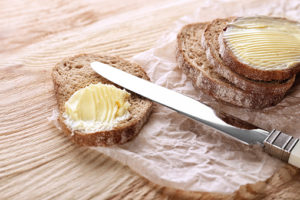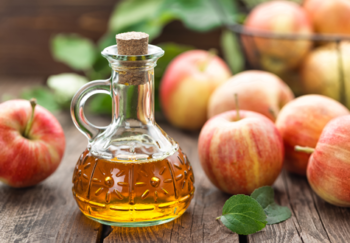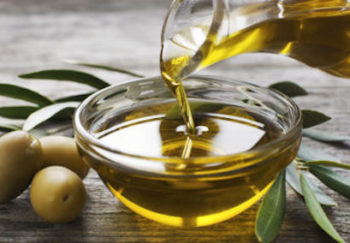 If that rich, buttery taste is one indulgence that you can’t do without, take a look at our Q&A with registered dietitian Katherine Basbaum to get the facts on picking the butter that’s better for you.
If that rich, buttery taste is one indulgence that you can’t do without, take a look at our Q&A with registered dietitian Katherine Basbaum to get the facts on picking the butter that’s better for you.
Why is butter so bad for you?
Butter is very high in calories (dietitians refer to it as an “energy-dense” food) and is made from animal fat, which means it’s loaded with cholesterol and saturated fat, two of the major culprits that lead to heart disease and stroke.
Does butter have any nutritional value?
Butter contains vitamin A, D and E, as well as trace minerals such as calcium, potassium and magnesium. But, unfortunately, the amounts of these vitamins and minerals in a serving of butter are not enough to make a positive nutritional impact.
Is there a difference between stick butter versus whipped?
The answer is yes. To produce a fluffier, lighter product, manufacturers whip air into regular butter. The result: it’s lighter in texture as well as in calories and fat. On average, a tablespoon of whipped butter delivers 70 calories, 7 grams of fat and 5 grams of saturated fat. Compare this to a tablespoon of regular stick butter, which has 100 calories, 11 grams of fat, and 7 grams of saturated fat, and you’re definitely looking at some pretty decent calorie and fat savings!
Are there advantages to using the butters made with olive oil?
The idea behind the butter/olive oil combo is that if you replace some of the volume with olive oil, you are switching out some of butter’s saturated fats with healthier mono- and polyunsaturated fats. If you are mainly concerned with heart health, this is a better way to go. But if you’re hoping that an olive oil/butter blend will also help you shed pounds, unfortunately that’s not the case. Heart-healthy oils like olive and canola pack just as many calories (or more) as butter.
What are butter substitutes?
When you hear the term “butter substitute,” it means a vegetable oil-based product that looks and tastes similar to real butter. Sound like margarine? You’re right! In its early days, there was only one kind of margarine, and it was defined as any vegetable oil-based, butter-flavored spread that contains 80 percent oil.
But over the years, “soft margarine spreads” (lighter tub versions of regular margarine) became popular. Why? They typically have less fat and oil than regular stick margarine (often less than 70 percent vegetable oil). Plus, they may contain some kind of added bonus like yogurt or plant stanols that help to either shave off additional calories and fat and/or boost the product’s health claims. (See below for examples.)
Are butter substitutes better for you than butter?
When it comes to heart health, butter substitutes (i.e. margarine and soft margarine spreads) are generally the better way to go since they are made from vegetable oils, which means they are cholesterol-free and contain the “good” fats mentioned above: the monounsaturated and polyunsaturated fats. But … not all margarines are created equal! Some contain trans fat, which, like saturated fat, increases blood cholesterol levels and the risk of heart disease and lowers high-density lipoprotein (HDL), the “good” cholesterol. In general, the more solid the margarine, the more trans fat it contains. So skip the stick margarines, as they usually have more trans fat than the tub varieties.
What are some key words to look out for on butter substitute labels that might signal an unhealthy choice?
The best advice I can give regarding label reading is to forget about what it says on the front of the product and go straight to the nutrition label on the back for the real story. One example: you pick up a tub or box of stick margarine and it proudly states on the front of the package that it is “trans-fat-free.” Not so fast. Take a look at the ingredient list and see if it contains the words “hydrogenated” or “partially hydrogenated.” If you see either of these words, head for the hills because this means the product does contains trans fat. How is this possible? The FDA allows foods with less than 0.5 grams of trans fat per serving to be rounded down to zero.
Are there healthy substitutes for butter?
If you decide to go with a butter substitute, here are some options:
- Brummel & Brown Spread Made with Yogurt
1 Tbsp: 45 cal, 5 g fat (1.5 g sat. fat) - Smart Balance Heart Right “Light” Buttery Spread
1 Tbsp: 50 cal, 5 g fat (1 g sat. fat)
*This spread contains plant sterols, which have been clinically proven to help lower blood levels of “bad” LDL cholesterol. In addition, this spread has a nice buttery flavor, and is a good source of Omega-3s. - Olivio Light
1 Tbsp: 50 cal, 5 g fat (1 g sat. fat)
*Since this one is made with olive oil, it has 320mg of Omega-3 fatty acids per serving, and is a good choice for cooking.
What are some tips for avoiding butter altogether?
If you’re looking for alternatives to butter and margarine, here are some tasty (and good-for-you) options:
- Try spreading your toast with avocado, “natural” nut butters or a little jam.
- Do as the Europeans do: dip your crusty bread in olive oil instead of swiping on a pat of butter.
- Use a cooking spray for vegetables or eggs. There are plenty of varieties to choose from, but olive or canola oil sprays are two of the best choices for flavor and versatility.
- Next time you make mashed potatoes, try subbing out your butter/margarine for a little low-sodium chicken broth. With this switch, you’ll save a ton of calories, fat and salt, and in return you get a creamy, flavorful, guilt-free mash.
- When baking, you can often get away with substituting ½ of the butter (or oil) with applesauce. You get the moisture you need for your muffins or loaf, and you’ll be sneaking in a little fruit and fiber!

